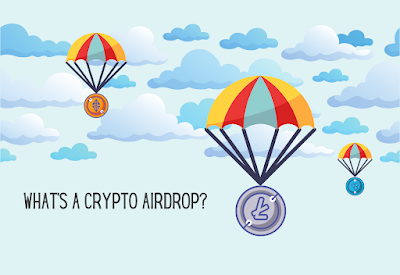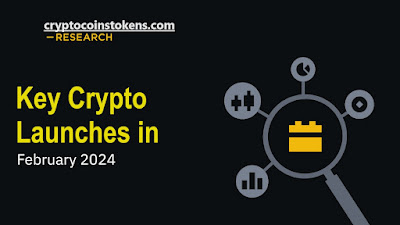Understanding Crypto Airdrops: Types and How to Participate
The concept of airdrops in the cryptocurrency industry is believed to have originated in 2014 with the launch of a cryptocurrency called "Auroracoin," which was designed to be distributed to the entire population of Iceland in an effort to create a decentralized alternative to the country's national currency. The Auroracoin airdrop was intended to distribute a certain amount of the cryptocurrency to every citizen of Iceland, regardless of whether they had any prior knowledge of or involvement in the cryptocurrency industry.
After the Auroracoin airdrop, the concept of airdrops gained popularity as a way for cryptocurrency projects to distribute tokens to a wide audience, with the goal of incentivizing adoption and increasing the network effects of the project.
"Airdrops are a popular way for cryptocurrency projects to distribute tokens to a wide audience. Learn about the different types of airdrops and how to participate."
The first major cryptocurrency project to use airdrops for user acquisition was the blockchain-based social media platform "Steemit," which launched in 2016. Steemit used a combination of user acquisition and holder airdrops to attract new users and incentivize content creation and curation on the platform.
Since then, airdrops have become a common tool used by many cryptocurrency projects to distribute tokens and incentivize user adoption. Airdrops are often used in conjunction with other marketing and user acquisition strategies, such as social media campaigns, referral programs, and bounty programs.
An airdrop is a distribution of free cryptocurrency tokens to a large number of wallet addresses.
There are several types of airdrops that are commonly used in the cryptocurrency industry, including the following:
User acquisition airdrops:
These airdrops are designed to incentivize users to sign up for a new cryptocurrency platform or service. For example, a new decentralized exchange might offer free tokens to users who sign up for the platform and complete certain tasks such as verifying their identity or making a trade.
Holder airdrops:
Holder airdrops are designed to reward existing token holders for their loyalty and support of a particular cryptocurrency project. For example, a project might airdrop tokens to users who have held a certain amount of tokens for a specific period of time.
Community airdrops:
Community airdrops are designed to reward users who are active participants in a particular cryptocurrency community. For example, a project might airdrop tokens to users who have participated in the project's social media channels, forums, or other online communities.
Bounty airdrops:
Bounty airdrops are designed to reward users who complete specific tasks related to a cryptocurrency project, such as writing a blog post, creating a video, or promoting the project on social media.
Forked airdrops:
Forked airdrops are a type of airdrop that occurs when a new cryptocurrency is created by forking an existing blockchain. Users who hold the original cryptocurrency at the time of the fork may receive free tokens of the new cryptocurrency.
Surprise airdrops:
Surprise airdrops are a type of airdrop that occurs without any prior announcement or explanation. These airdrops can be used to generate buzz and excitement around a particular cryptocurrency project.
It's important to note that airdrops are not always legitimate, and there are many scams and fraudulent airdrops in the cryptocurrency industry. Users should always exercise caution and do their due diligence before participating in any airdrop, and should only participate in airdrops from reputable projects with a clear and transparent purpose.
Brief history of some of the most significant airdrops in the cryptocurrency industry, along with their dates:
Auroracoin - 2014: Auroracoin was the first major airdrop in the cryptocurrency industry. It was designed to distribute cryptocurrency to the entire population of Iceland in an effort to create a decentralized alternative to the country's national currency. The airdrop began on March 25, 2014 and distributed 31.8 Auroracoins to every citizen of Iceland.
Stellar - 2014: Stellar, a cryptocurrency project focused on enabling cross-border payments, conducted a series of airdrops in 2014 in an effort to distribute its cryptocurrency to a wider audience. The first airdrop occurred on August 5, 2014 and distributed 50 Stellar Lumens (XLM) to every Bitcoin holder.
OmiseGO - 2017: OmiseGO, a blockchain-based payment platform, conducted a surprise airdrop in July 2017, distributing 5% of its total token supply to Ethereum holders.
EOS - 2018: EOS, a blockchain platform designed to support decentralized applications, conducted a year-long airdrop campaign from June 2018 to June 2019. The campaign distributed a total of 1 billion EOS tokens to users who registered and completed certain tasks such as voting for block producers.
Uniswap - 2020: Uniswap, a decentralized exchange built on the Ethereum blockchain, conducted a surprise airdrop of its UNI token in September 2020. The airdrop distributed 400 UNI tokens (then valued at over $1,000) to every user who had interacted with the platform before September 1, 2020.
Unisocks - 2020: Unisocks, a project that allows users to purchase limited-edition socks with cryptocurrency, conducted an airdrop in September 2020. The project airdropped one Unisocks token (then valued at over $70) to every Ethereum address that had ever held more than 0.1 ETH.
It's worth noting that there have been many other airdrops throughout the history of the cryptocurrency industry, and the above examples are just a few of the most notable. Airdrops remain a popular tool for cryptocurrency projects to distribute tokens and incentivize user adoption.
Participation in Airdrops :
Participating in airdrops typically involves completing certain tasks or meeting specific criteria set by the cryptocurrency project conducting the airdrop. This can include activities such as following the project on social media, joining their Telegram group, sharing or retweeting posts, referring new users, or holding a certain amount of the project's cryptocurrency in a wallet.
To participate in an airdrop, you will usually need to have a compatible cryptocurrency wallet or exchange account. Once you have completed the required tasks, you will need to provide your wallet or exchange address to receive the airdropped tokens.
It's important to note that not all airdrops are legitimate, and some may be scams or phishing attempts designed to steal your cryptocurrency. Before participating in an airdrop, do your research on the project and make sure it is a reputable and trustworthy entity.
Overall, participating in airdrops can be a fun and potentially profitable way to earn free tokens from cryptocurrency projects. However, it's important to approach them with caution and only participate in airdrops from reputable sources.
AirdropBob:
Some popular websites that track airdrops include Airdrop Alert, AirdropBob, and Airdrops.io. These sites often provide information on the requirements for participation, the total token supply, and the distribution schedule.
To participate in ongoing airdrops, you will typically need to complete certain tasks or meet specific criteria set by the project conducting the airdrop. These requirements can vary widely, so it's important to read the instructions carefully and make sure you understand what is required before participating.
Remember to exercise caution when participating in airdrops and only engage with projects that you have thoroughly researched and believe to be legitimate. Scammers and fraudsters may attempt to take advantage of the excitement surrounding airdrops, so it's important to stay vigilant and protect your assets.




Comments
Post a Comment